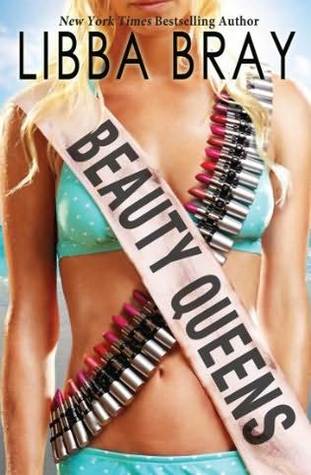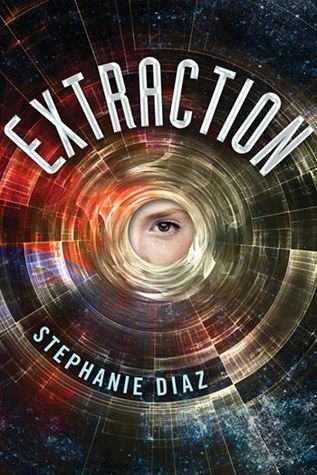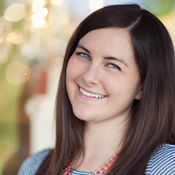You’ve got questions, we’ve got answers! On Fridays, the OneFours answer questions about their books, writing processes, life, favorite flavors of ice cream, and more. This week’s question:
Which book by another author would you love to claim as your own and why?
 I’d love to pass off MONSTERS OF MEN by Patrick Ness as my own. His whole Chaos Walking Trilogy, really. It contains such an interesting sci-fi concept, and Ness isn’t afraid to put his characters into the kind of horrible situations that make you want to simultaneously punch him in the face and sob for a million years. My goal as a writer is to make people feel the way I feel when I read his books.
I’d love to pass off MONSTERS OF MEN by Patrick Ness as my own. His whole Chaos Walking Trilogy, really. It contains such an interesting sci-fi concept, and Ness isn’t afraid to put his characters into the kind of horrible situations that make you want to simultaneously punch him in the face and sob for a million years. My goal as a writer is to make people feel the way I feel when I read his books.
–Stephanie Diaz, EXTRACTION
Maggie Stiefvater’s book always make me feel like I have no business writing, but I’ve learned that a lot of newer authors feel that way. So, I’m going to say Amber Dermont’s THE STARBOARD SEA, which is a coming-of-age story (classified as adult, but I’d readily recommend to teens who appreciate beautiful words). It’s the kind of book that deepens with repeated reading and a protagonist who really got under my skin and made my cry (which is the benchmark of a good book for me).
–Helene Dunbar, THESE GENTLE WOUNDS
I’m gonna cheat and go with a whole series here, but they’re short! The Ruby Oliver series (THE BOY BOOK, etc.) by E. Lockhart is, in my opinion, the most dead-on insight into the teen female mind. The writing is great, and Ruby’s a really fun character, but what really gets me about it is the way four strong books are crafted out of the kind of real, true dramas I remember experiencing that age, which no crazy, unrelatable plot points thrown in for sympathy points or dramatic effect or to scream “High concept!” It’s really just a girl learning to prioritize her life and embrace herself, while understanding what makes some relationships stronger and more worthwhile than others. To pull off that kind of thing while also being quirky and entertaining and unique isn’t easy, and it’s the kind of thing I’d love to contribute to the YA canon!
–Dahlia Adler, BEHIND THE SCENES
Would anyone notice if I replaced Ellen Raskin’s name with my own? Even now, The Westing Game has everything I love in a book. A central mystery. The reading of a will. Cryptic clues. A race to solve them. An ensemble cast of interesting, complex characters. A flawed but funny mini-heroine with a great name (Turtle). And at no point does the book talk down to kids: the plot includes bombs, bookies, religious extremism, and degenerative disease. I read this book over and over as a kid, and I still pick it up and re-read it! I think that’s the dream of any author–to write a book that has something to say to every reader.
–Laura Marx Fitzgerald, UNDER THE EGG
 Oh, Libba Bray’s BEAUTY QUEENS, without a doubt. It’s smart and funny. A brilliant work of satire! I had writer-envy right from page one.
Oh, Libba Bray’s BEAUTY QUEENS, without a doubt. It’s smart and funny. A brilliant work of satire! I had writer-envy right from page one.
–Skila Brown, CAMINAR
I’m a sucker for a good romance, and it doesn’t get more perfect than ANNA AND THE FRENCH KISS by Stephanie Perkins. I don’t know anyone who isn’t in love with both Etienne and Anna, and the perfect Parisian setting is just the icing on this delicious cake. I would love to be able to craft such a perfect romance.
–Jessica Love, PUSH GIRL
I’d be thrilled to be able to slap my name onto WHEN YOU REACH ME by Rebecca Stead. Fantastic characters and setting, and a plot that fits together like a perfect puzzle? Something to aspire to, for sure.
–Tara Dairman, ALL FOUR STARS
I was so endlessly captivated by the world building in DAUGHTER OF SMOKE AND BONE, by Laini Taylor. Her ability to create a world that is so vivid and lush, while also creating real, relatable characters blew me away. I wish I wrote in that genre because every word on her pages would be such an incredible study in craft.
–Kelsey Macke, DAMSEL DISTRESSED
Another vote for DAUGHTER OF SMOKE AND BONE. Laini Taylor’s prose is breathtakingly gorgeous, and her world-building is some of the best I’ve ever come across. I read that book twice—once in complete awe of its craft and once more just for fun.
–Meredith McCardle, THE EIGHTH GUARDIAN
 Code Name Verity by Elizabeth Wein. From the very first sentence, I knew it was going to be a bad idea to read it, because it ‘s so good, with such completely compelling prose, I felt like a total hack in comparison. It’s the kind of book that makes you want to be a better writer.
Code Name Verity by Elizabeth Wein. From the very first sentence, I knew it was going to be a bad idea to read it, because it ‘s so good, with such completely compelling prose, I felt like a total hack in comparison. It’s the kind of book that makes you want to be a better writer.
–Lisa Maxwell, SWEET UNREST
If I’d written BREADCRUMBS by Anne Ursu, I could die happy. I love the way she combines the real world with fantasy and brings alive the hurt of losing a friend. She manages to make being human seem hyper real through fantasy, and her writing makes me so immersed. Breadcrumbs is also super dark and scary, and I love that!
–Edith Cohn, SPIRIT’S KEY
One day I would love to write a book like The Interestings by Meg Wolitzer. I love it for its scope and the incredible characters she creates and follows through out their lives.
–Sashi Kaufman, THE OTHER WAY AROUND
This is a hard one! I’m so tempted to say Eleanor & Park by Rainbow Rowell, but I’m going to have to go with God-Shaped Hole by Tiffanie DeBartolo. It was the first book I had to re-read immediately after finishing it.
–Julie Murphy, SIDE EFFECTS MAY VARY
 I’m tempted to say The Hunger Games, because, helloooo, BANK. But I’m going to say Jandy Nelson’s The Sky Is Everywhere. Beautiful prose, quirky characters, gorgeous setting, poetry. It’s basically like the best date ever in a book.
I’m tempted to say The Hunger Games, because, helloooo, BANK. But I’m going to say Jandy Nelson’s The Sky Is Everywhere. Beautiful prose, quirky characters, gorgeous setting, poetry. It’s basically like the best date ever in a book.
–Jaye Robin Brown, NO PLACE TO FALL
Daughter of Smoke and Bone by Laini Taylor because HOLY GORGEOUS WRITING, BATMAN. She could write about knitting and I’d be captivated.
–Lori M. Lee, GATES OF THREAD AND STONE
I’d love to claim MY SUPER SWEET SIXTEENTH CENTURY (the whole series) by Rachel Harris. The characters are so real, the romance makes me swoon, and I love the time travel elements. (I’ve always wanted to write a time travel book, but I’m so afraid I’d mess it all up!) Or if I can’t have that series, I’d claim the CAMP BOYFRIEND series by J.K. Rock for the same reason: characters that feel like real people and romance that makes my heart flutter. 
–Veronica Bartles, TWELVE STEP
I’m going to say CLOCKWORK ANGEL by Cassandra Clare. There’s something about her writing that makes me care so freaking much about the characters, and the romance between Will and Tessa is one of my all time favourites. The scene where they first kiss is a masterpiece of an example of how to create an incredible amount of romantic tension with the simple act of removing a glove.
–Danielle L. Jensen, STOLEN SONGBIRD
 My choice would go to JELLICOE ROAD by Melina Marchetta. I read it last year and was so struck by the beautiful writing and the stunning plot craftsmanship. And all of the characters felt so real and genuine to me; I didn’t want to leave them behind when I got to the last page. I didn’t at all expect it to affect me like it did, and I only wish I could write something so complex and touching.
My choice would go to JELLICOE ROAD by Melina Marchetta. I read it last year and was so struck by the beautiful writing and the stunning plot craftsmanship. And all of the characters felt so real and genuine to me; I didn’t want to leave them behind when I got to the last page. I didn’t at all expect it to affect me like it did, and I only wish I could write something so complex and touching.
–Annie Cardi, THE CHANCE YOU WON’T RETURN
I’d love to be able to claim SAVVY by Ingrid Law. I am so intrigued by the idea of turning 13 and having a special power! I was captivated from the first page of her wonderful book.
–Kate Hannigan, CUPCAKE COUSINS
Jaye stole my idea of Jandy Nelson’s The Sky Is Everywhere. You know what they say about great minds… Beyond the heartfelt way Jandy weaves a tale of both grief and love, loss and new beginnings, the use of Lenny’s discarded poetry is genius. I had ALL the feels after readings that book. In fact, I think I need to reread it right now!
–Bethany Neal, MY LAST KISS
The Dark is Rising Sequence by Susan Cooper. I don’t recall how old I was when I read it, but those are the books that made me look for the small crevices and sheltered places in my own world where magic might hide. Which is another way of saying they turned me into a bizarre little child writer. I’d like to do that for some other unsuspecting creature.
–Natalie Parker, BEWARE THE WILD
What book do you wish you could claim as your own? Share in the comments!
 Annie Cardi lives outside Boston, MA, where she spends her time baking, creating alternate lyrics for tv show theme songs, and writing YA fiction. Her debut novel, THE CHANCE YOU WON’T RETURN, is forthcoming from Candlewick Press on April 22 2014. Her writing is fueled by copious amounts of coffee and chocolate. Annie Cardi lives outside Boston, MA, where she spends her time baking, creating alternate lyrics for tv show theme songs, and writing YA fiction. Her debut novel, THE CHANCE YOU WON’T RETURN, is forthcoming from Candlewick Press on April 22 2014. Her writing is fueled by copious amounts of coffee and chocolate. |
























